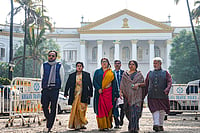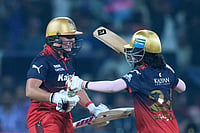Ironically, it was on October 2, Gandhi Jayanti, that the latest round of trouble erupted culminating in the Dalits' decision to convert. On the same day, a meeting of non-Dalits in the village was convened and a decision to boycott the Dalits was taken. The boycott meant that the Dalits and their sympathisers, primarily the CPI(M), were 'debarred' from purchasing essentials from the village shop and the supply of irrigation water to their lands was stopped. When the unrest in the village was brought to the notice of the district collector, the RDO (Revenue Divisional Officer) was directed to conduct an inquiry. But all efforts by the authorities to resolve the issue failed and it was decided to call off the village festival in October.
The Vanniyars took this move as an insult to their community since the village festival is dominated and controlled bythem. In retaliation they denied the Dalits easy access to the village pond, known as the Lotus Pond, by building a wall around it. The Vanniyars themselves deny that the wall was built to keep off the Dalits. Points out T.G. Lakshathipati, panchayat board chairman and a Vanniyar sympathiser: "The wall was not built to block the Dalits. The owner of the land has just built a compound wall which is his."
Kootharambakkam, likemost rural areas in Tamil Nadu, is divided into the main village and the 'colony'—a euphemism for the area set apart for Dalits. The main source of water for the village is the Lotus Pond. Dalits were traditionally forbidden to draw water from it. A Vanniyar had to fill the pots of the Dalits. However in 1979, during a wedding ceremony in the colony, some Dalits defied the village norm and their act of 'polluting' the pond resulted in a riot. The state government intervened and set up a peace committee to resolve the issue.
It was decided that no one could stop the Dalits from drawing water from the village pond and the common well. Also, the proceeds from the lakes and other common properties like tamarind trees were to be shared according to the population ratio of the Dalits and the Vanniyars. A resolution to this effect was signed in the presence of the RDO.
But trouble erupted within two weeks. A 26-year-old Dalit was attacked brutally. Three days later the village well was poisoned by unidentified miscreants. Recalls V. Maduvai, a Dalit activist: "It was a ploy to kill us en masse." But the Vanniyars still maintain that it was the Dalits who poisoned the village well. At the end of the sordid episode, eight Dalit families moved out of the village.
Things took a turn for the worse after T.G. Lakshathipati was elected on an AIADMK ticket as the panchayat board chairman. Lakshathipati bagged the contract under the Group Housing Scheme to con-struct 20 houses for the Dalits. The houses collapsed even before anyone could move in. A series of complaints were sent to all levels of officials from the tahsildar to the chief minister. However, no action was taken against the panchayat board chairman.
Instead, the caste Hindus joined hands with the Vanniyars and a decision was taken to not employ anyone from the Dalit colony in the fields. To add insult to injury, an unofficial ban was imposed on the Dalits rearing domestic animals and birds. With no employment in their own village, the people from the colony had to walk miles to places of work.
But the Dalits made it clear that they were not going to take things lying down. By 1990 they had begun to organise themselves. An NGO called Village Education Liberation Society (VELS) adopted the colony. And asa first step the Dalits were made aware of their rights and VELS activists helped them resist the ban on rearing domestic animals.
Another area in which the Dalits started asserting themselves was the annual auction of the 18 acres of land belonging to the Shiva temple in Kancheepuram. The normal practice was for the village to participate in the event for the lease of the land which is given away at a throwaway price of Rs 2,000 for a period of one year. Following this, the land is auctioned once again by the village panchayat which generates about Rs 40,000. Traditionally, this revenue was shared between the Dalits and the rest of the village on a ratio of 1:3. Says Lakshathipati: "There is no discrimination here. The revenue is shared on the basis of the proportion of the population. Even Dalits have no objection towards this system of revenue sharing."
But in 1991, for the first time in the village's history, the Dalits participated in the auction separately. The bids went up to a record Rs 37,000. As a result when the landwas re-auctioned by the village panchayat it could not raise any money for the common kitty. The Vanniyars blame the Dalits for "ruining" the only source from which the village could generate resources. However, the Dalits feel that this single act helped them gain the courage to fight an injustice perpetuated for generations.
A peace committee was convened by the state government and in 1993 the temple land was divided into four parts and the Dalits were asked to bid for one lot. In retaliation, the Vanniyars declared that the Dalits had no right to take part in the annual three-day Mariamman temple festival. However, the deputy tahsildar intervened and the Dalits were allowed to participate.
But there has been no enduring peace. In September this year, when the Dalits paid their contribution for the annual festival, it was not accepted as a "legitimate contribution" but as a 'donation'. Says Laksha-tipati: "Only the villagers have a legitimate share. The people from the colony can only donate and cannot demand anyother role in the festival." This irked the Dalits who demanded that the accounts of the temple be made public and that the deity be brought out in a procession through the 'colony'.
The only political party which has attempted to mediate between the two warring groups has been the CPI(M). A six-member CPI(M) committee of the Vanni-yars intervened and suggested that the temple festival should not be commu-nalised and that the village could not afford a riot. The members of the CPI(M) team had to face the wrath of the entire village and were accused of being "friends of the Dalits". The CPI(M) flagpole was broken and the party flag burnt. A police complaint was registered at the Kanche-epuram Taluk police station but no action has been taken, allege the CPI(M).
Ever since the October 2 decision of the Vanniyars to boycott the Dalits and the CPI(M), the Dalits are a very frustrated lot. According to the residents of the colony, they have submitted as many as 35 petitions in the recent past demanding basic amenities for the colony. But the government has failed to act upon them. With no other option, the Dalits have decided to turn to Islam. Says Murthy, a Dalit: "The government is not helping us so we have decided to embrace Islam."
But why Islam? The Dalits have been suffering at the hands of the Vanniyars for almost 14 years and now feel that conversion to the Muslim faith alone can save them. Explains Murthy: "Our plight will remain the same in any other religion other than Islam. Look at the plight of the Dalit Christians." Conversion to Buddhism is ruled out since the caste Hindus have reduced that "noble religion" to a "religion for Dalits" and therefore the social stigma would remain. Before embracing Islam, the Dalits of Kootharam-bakkam will go on their annual pilgrimage to Sabarimala. Murthy and the rest of his community are not clear about the formalities involved in converting to a new religion but they will be writing to Muslim leaders seeking their advice and help.
Whether the Dalits will stick to their resolve to convert is yet to be seen. However, their threat to give up Hinduism has pressurised the Tamil Nadu government to act. Two handpumps and a colour TV set have already been provided for the colony. RSS volunteers and VHP activists now make regular visits to the Dalit homes. As Murthy puts it, the conversion threat has helped the Dalits in Kootha-rambakkam to grab national attention. Also, it has given the state government a severe jolt.












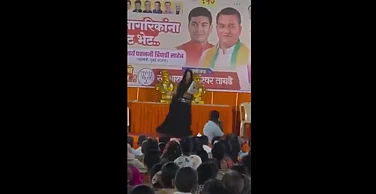
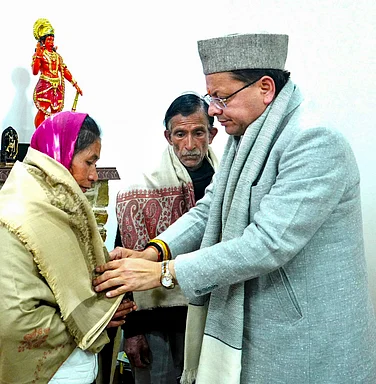




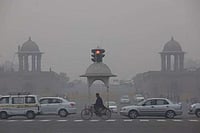



.png?w=200&auto=format%2Ccompress&fit=max)
